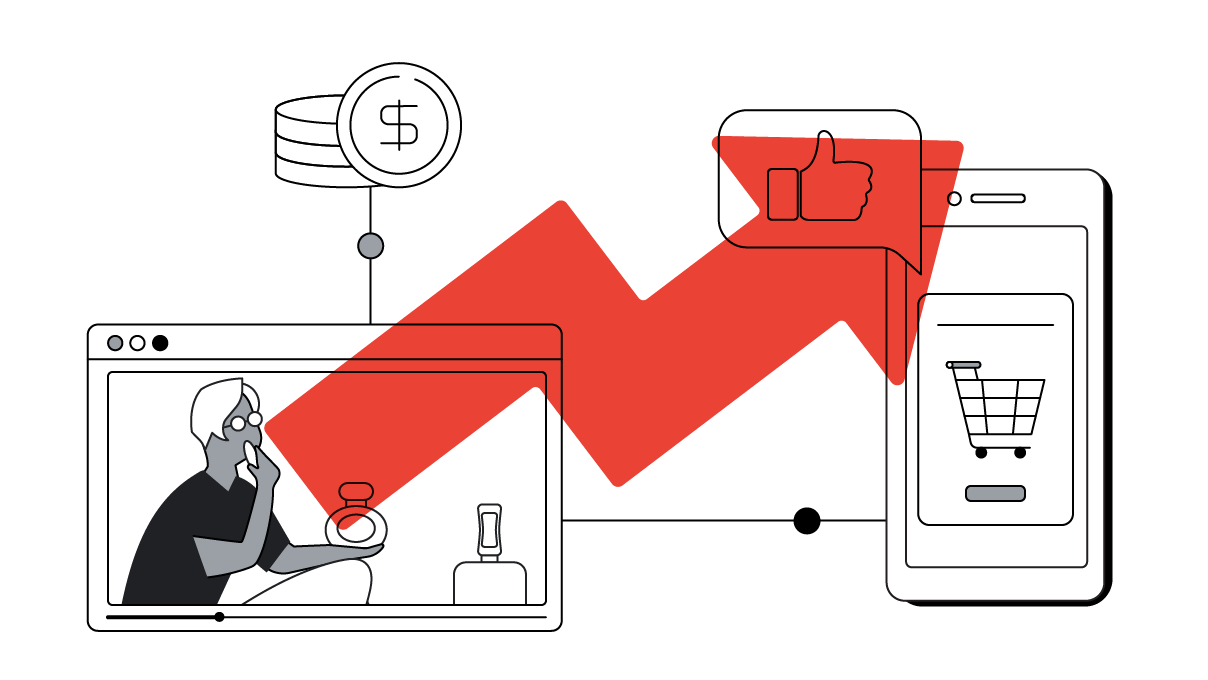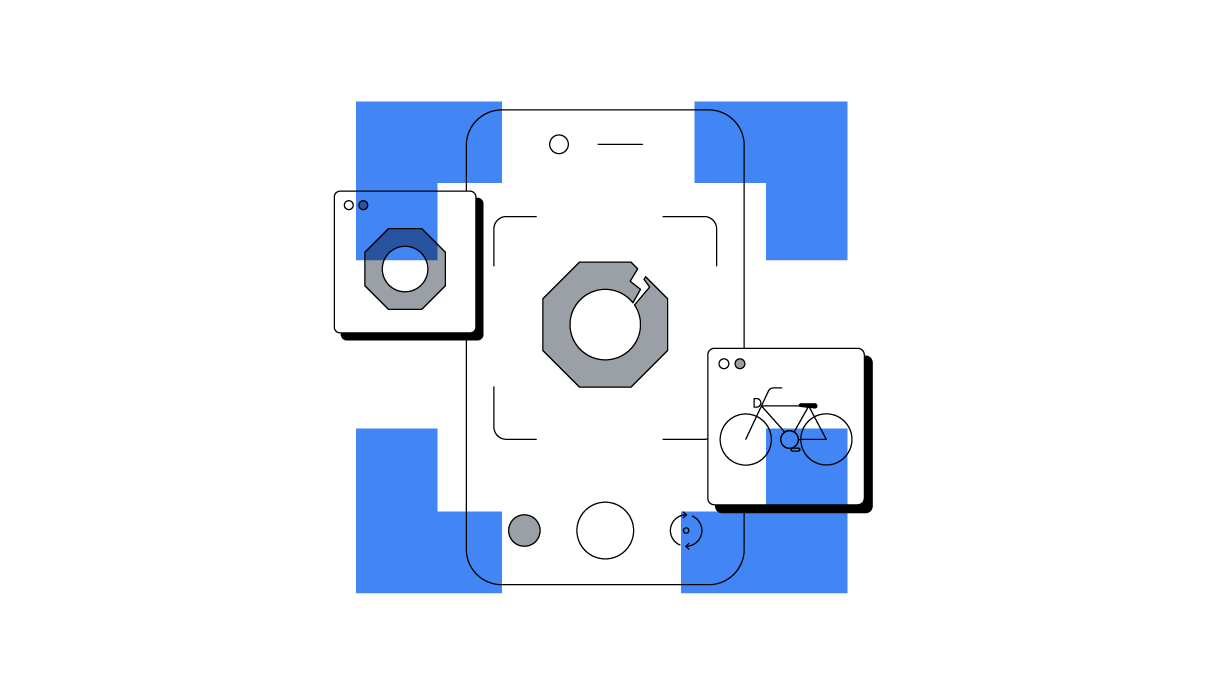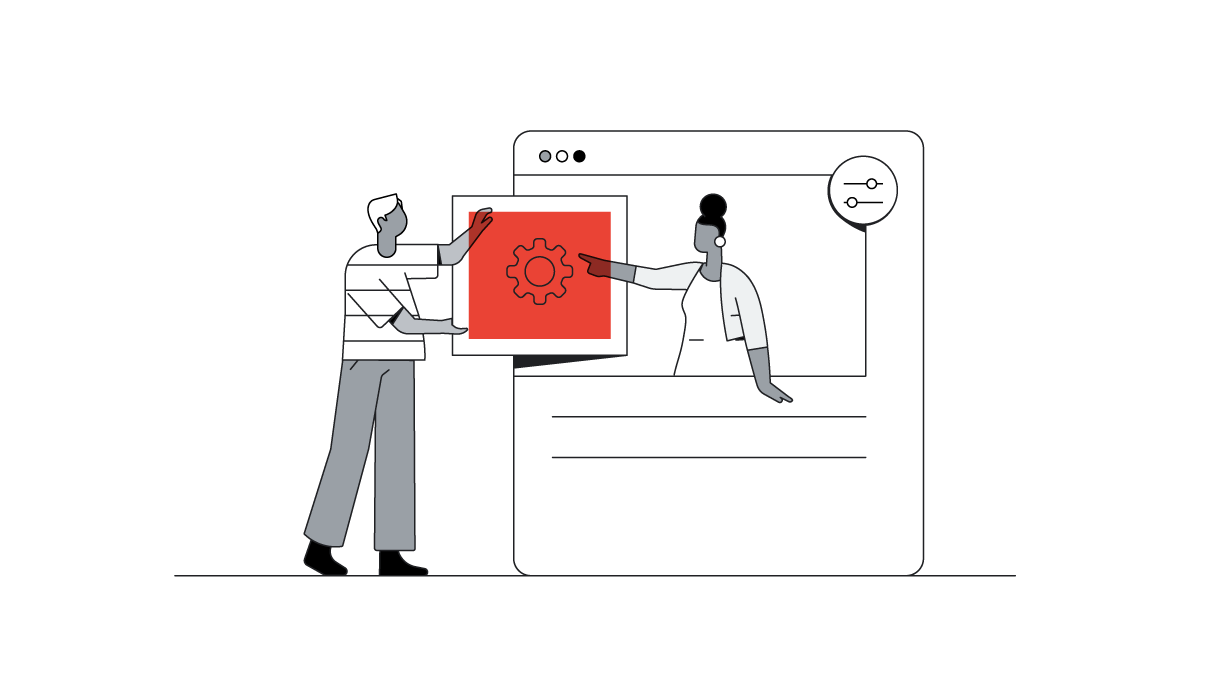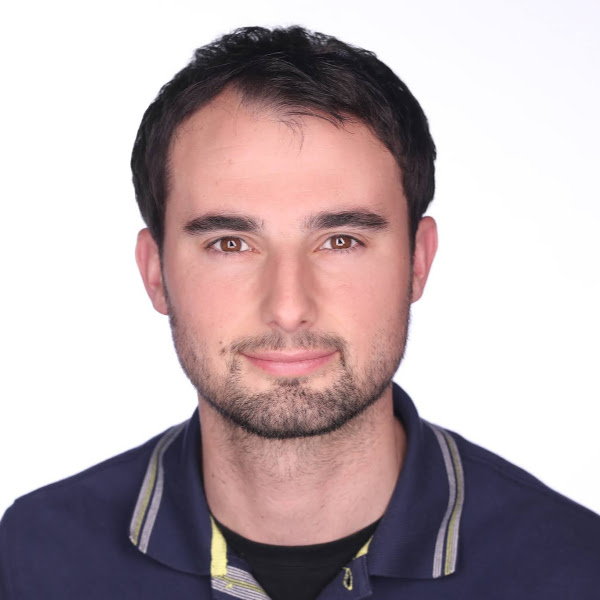In a world in which most Americans are exposed to up to 10,000 ads each day, it’s clear that one ad impression isn’t going to cut through the noise. Yet brands also have to be wary of overexposure. When people see the same ad over and over, it can lead to frustration and decreased brand equity. This challenge is one we at the Google Media Lab, which manages the media strategy for all of Google’s marketing, have spent a lot of time thinking about, experimenting on, and workshopping.
When it comes to optimal frequency and great storytelling, we’ve found an unexpected solution in video ad sequencing on YouTube. In addition to improving consideration and purchase intent, we’re seeing impressive results when it comes to delivering frequency at the right level on a per viewer basis. In dozens of campaigns across the U.S., U.K., Germany, Korea, and Japan for Google brands, including Stadia and Chromebook, video ad sequencing has driven 80% to 110% higher brand lift and 50% to 70% lower cost per lifted user than nonvideo ad sequencing campaigns, depending on the marketing objective.1
Here’s what we’ve learned along the way.
Finding the frequency sweet spot
As TV audiences shift to streaming, hitting target rating point goals on TV means driving frequency way up, to the point of diminishing return. As consumers seamlessly shift between devices and channels, this approach can mean they are over- or underexposed, depending on their viewing habits. Some consumers receive too many ads, which can lead to annoyance. Others receive so few that there’s minimal impact. Much of this is imperceptible to media planners, as tools and targeting often relies on average frequencies.
When it comes to frequency, there’s no magic number; brand awareness, product maturity, and campaign goals all play a factor. Most frequency solutions limit exposure via capping tools without the option to control or increase frequency when needed at the viewer level. With video ad sequencing, campaigns can be uniquely optimized to drive higher frequencies, specifically with your target audience on YouTube, for maximum impact. We found that running simple creative and audience experiments was an affordable way to find the frequency sweet spot for different markets and brands.
Across all our Google campaigns from April 2020 to December 2020 that used video ad sequencing, higher frequency drove higher absolute brand lift.2 On average, ads shown in frequencies of three or more drove 61% higher absolute brand lift than frequencies of one and two.3

Expanding storytelling potential: variety plus frequency
We’re all wired to remember great stories, and video ad sequencing allows us to tell stories to customers across their purchase journey. At Media Lab, we love experimenting with the storytelling potential of sequencing; it’s proved to be more memorable than the 30-second ad spot.4 In testing five story sequences, we found that creating a narrative structure that built on itself — responding to what people watched or engaged with previously — performed best, driving increases to brand awareness, ad recall, and purchase intent.
We also discovered that three increasingly advanced sequencing methods drove higher brand lift, respectively.5
3 methods for using video ad sequencing to drive higher lift
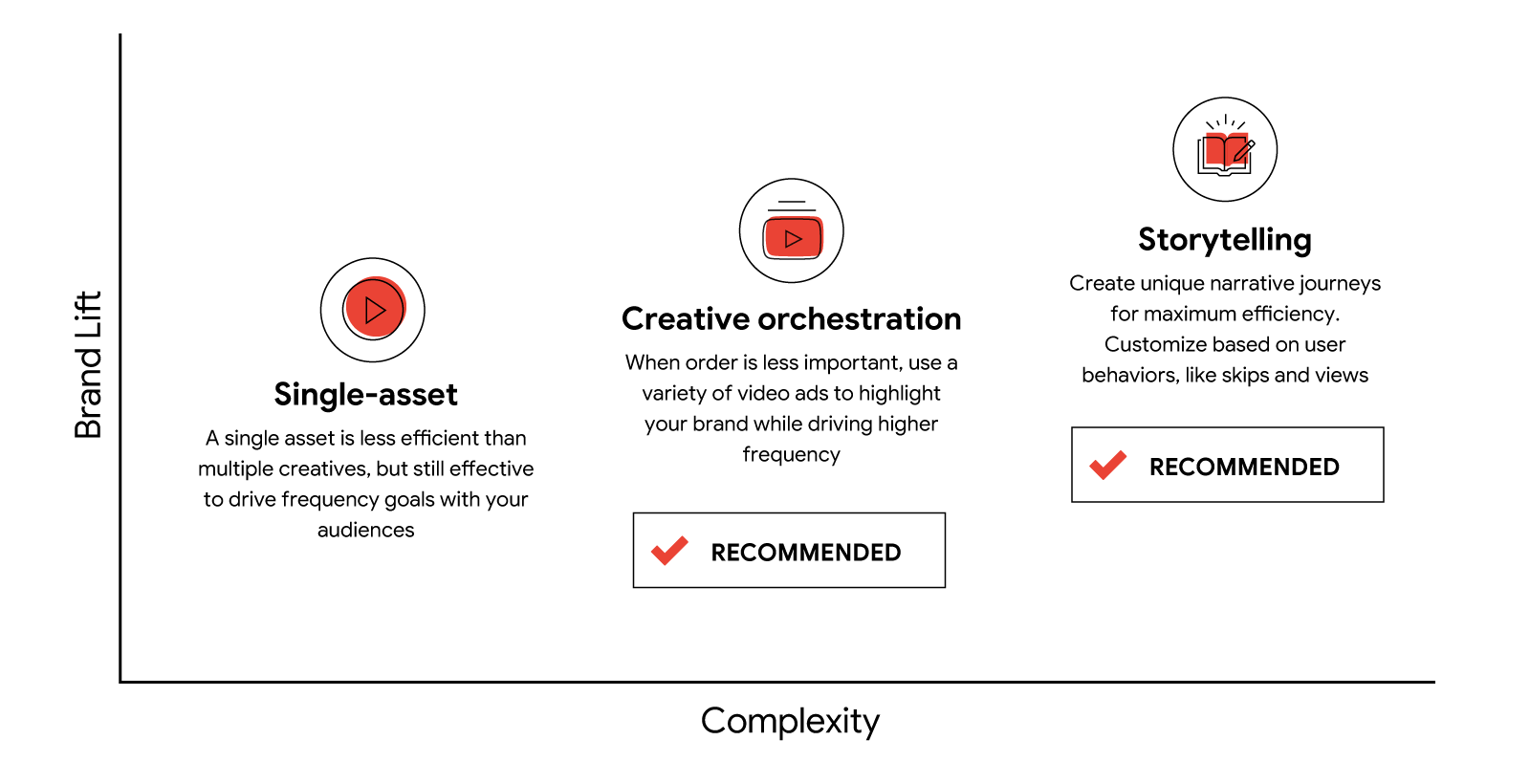
We recommend using the creative orchestration and storytelling methods for maximum impact. For our 2020 “Brand Helpfulness” campaign, we ran two video ad sequence campaigns. One showed the same 60-second hero film, “Thank you, teachers. Thank you times infinity” three times. The other used three different creative variations: the hero film, followed by the shorter stories “Teachers Appreciation Week: ABCs” and “Teachers Appreciation Week: Syllables.” The second sequence, the one with more creative variation, not only drove higher ad recall, but a 60% higher completion rate; 9% lower CPM; a 16% higher view rate; and a weekly and cumulative frequency closer to our goal than the single asset. We continue to see these same video results play out across different brands and markets. Variety wins.
Adopting a test-and-learn approach to measurement
At Media Lab, we pride ourselves on being digital-first marketers who want to push the industry forward. Having a test-and-learn mindset is a belief we hold so dear, we reserve 20% to 30% of every campaign budget for testing.
YouTube is one of the most data-rich and data-quick platforms. Our Brand Lift surveys get thousands of respondents, allowing us to slice and dice lots of data in many different ways. And because the surveys are completed quickly, we are provided with fast, efficient, statistically significant results. This means we can test a lot of theories and ideas cheaply on YouTube, and then scale those learnings to ensure maximum impact and good budget stewardship. We are constantly tinkering and fine-tuning throughout the duration of a campaign, which helps us optimize video results.
At Media Lab, we reserve 20% to 30% of every campaign budget for testing.
Experimentation is embedded into the DNA of Media Lab, hence the name. We’re excited to share our findings on sequencing, and to continually adjust, adapt, and learn as everything from the tools we use to the way we watch evolves.
